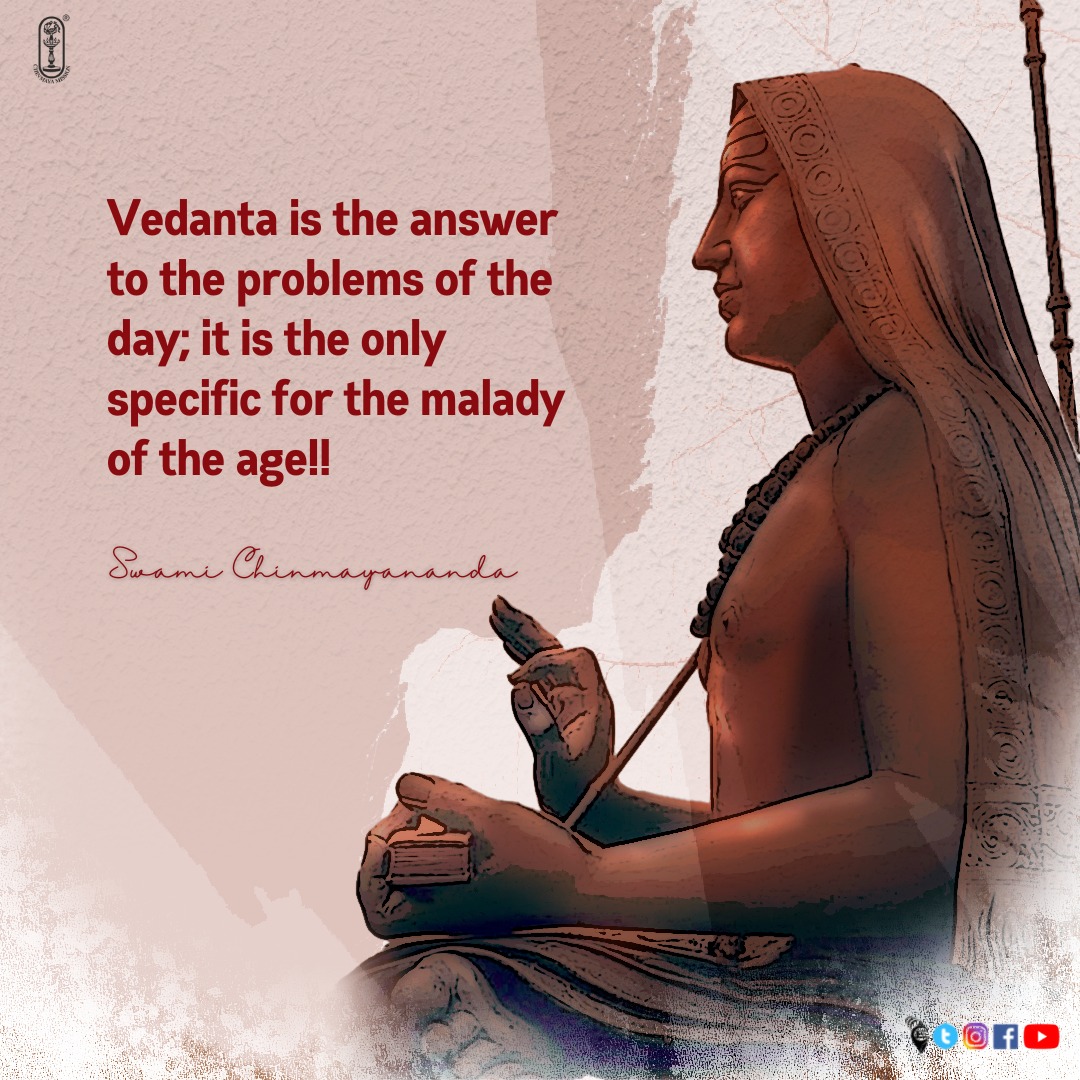VEDANTAM FOR BEGINNERS - 44. SWAMI SIVANANDA
========================================================================
Monday, March 06, 2023. 06:00.
TAT TVAM ASI = That Thou Art :
The Maha-Vakyas :
Post-44.
========================================================================
Inapplicability Of Viseshana Viseshya Bhava :
It is open for anyone to contend that the words Tat and Tvam may be interpreted and
identified through the use of either solely Samanadhikarana or Viseshana Viseshya Bhava as in the
case of a Blue Lotus, without the help of Bhagatyaga Lakshana. The answer to that is that the literal
meaning, as understood in the statement ‘the blue lotus,’ does not fit in with the sentence Tat Tvam
Asi.
In the assertion ‘the blue lotus,’ the two words ‘blue’ and ‘lotus,’ by themselves, are two
contrary ideas, but still they qualify each other so as to signify a common object. This mutual
qualification is Viseshana Viseshya Bhava.
All lotuses are not blue and all blue things are not lotuses. But in this particular case, blue
qualifies the word lotus and lotus qualifies the word blue. Thus they qualify each other and there
exists a mutual qualifier-qualified relationship. Thus, temporarily avoiding all their distinctions,
they unite together to mean that thing which we call the blue lotus, the Samanadhikarana.
This type of interpretation cannot be given to the. sentence ‘Tat Tvam Asi.’
In the statement ‘the blue lotus,’ though the word ‘blue’ and ‘lotus’ are two contrary ideas,
yet, they exist on one and the same substratum, Samanadhikarana, and further stand in the mutual
relationship of qualifier and qualified to denote a common basis.
In the case of Tat and Tvam, they are two contrary ideas respectively associated with
remoteness and nearness. As such, their co-existence in one and the same individual is not possible.
Further, it cannot be argued that after eliminating their mutual distinctions they stand in the mutual
relationship of the qualifier and the qualified, on the same substratum, so as to mean that
substratum.
In the sentence Tat Tvam Asi there is no effort to bring two contrary ideas in the relationship
of the qualifier and the qualified, and thus to effect a unity between two contrary ideas, so as to bring
out the meaning of the substratum. The true significance of the sentence Tat Tvam Asi is an absolute
homogeneous Consciousness.
The inadmissibility of Jahallakshana and Ajahallakshana were discussed before. Now the
inadmissibility of Samanadhikarana and Viseshana Viseshya Bhava have been discussed·
Thus, Bhagatyaga Lakshana or Jahadajahallakshana alone is admissible in getting at the
true meaning of the sentence Tat Tvam Asi.
*****
Next
Realisation :
To be continued
=========================================================================









.jpg)
Comments